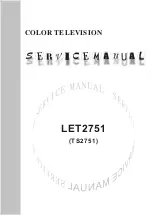
118
119
Setting up as an (HDMI-CEC)-enabled device
1.
Press the
SOURCE
button. The Source screen appears. Select a connected device, and then press
the down directional button.
2.
Select
(HDMI-CEC)
from the menu. The selected device is set up as an (HDMI-
CEC)-enabled device. The following menu options are available.
"
The menu options displayed on the menu may differ by external device.
●
(HDMI-CEC)
Sets up the selected device as an (HDMI-CEC)-enabled device, and then displays a list
of all external devices connected to the TV. If you select an external device in the list, it is used
as the input source. If you select
View TV
, the TV exits (HDMI-CEC) so that you can
watch regular TV without interference from any external device.
Read before connecting an (HDMI-CEC)
"
You can configure the TV's Universal Remote to control to control third-party cable boxes, Blu-ray players,
and home theaters that do not support HDMI-CEC. For more information, refer to "Controlling External
Devices with the TV Remote - Using the Universal Remote."
"
cannot be used to control external devices that do not support HDMI-CEC.
"
(HDMI-CEC)-enabled devices must be connected to the TV with an HDMI cable. Note that some
HDMI cables may not support (HDMI-CEC).
"
The TV remote control may not work under certain circumstances. If this occurs, set up the device as a
(HDMI-CEC)-enabled device again.
"
(HDMI-CEC) works only with external devices that support HDMI-CEC and only when those
devices are either in standby mode or turned on.
"
(HDMI-CEC) can control up to 12 compliant external devices (up to 3 of the same type) except for
home theaters. (HDMI-CEC) can control only one home theater system.
"
To listen to 5.1-channel audio from an external device, connect the device to the TV via an HDMI cable and
connect a 5.1 home theater system directly to the TV's digital audio output connector.
















































